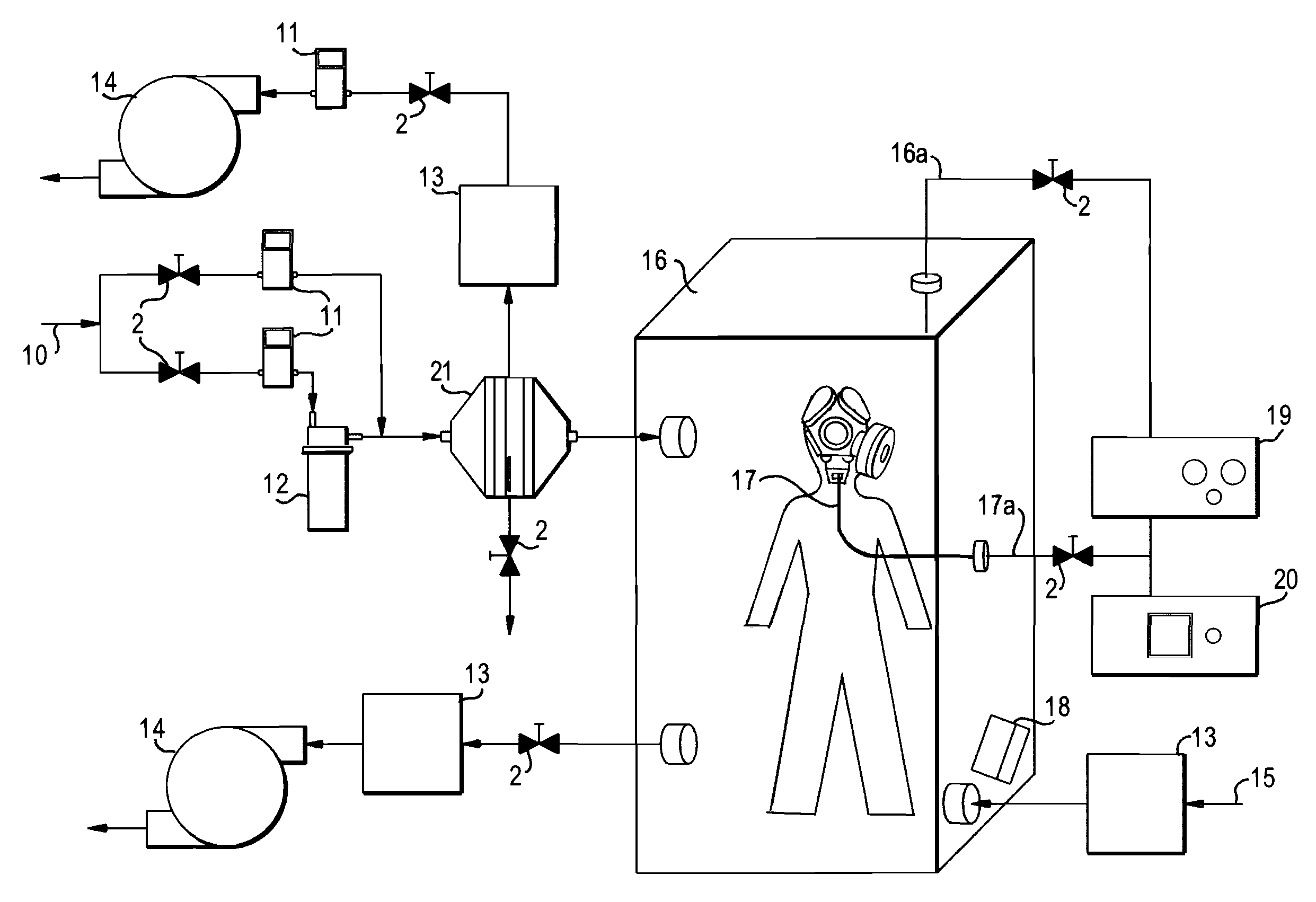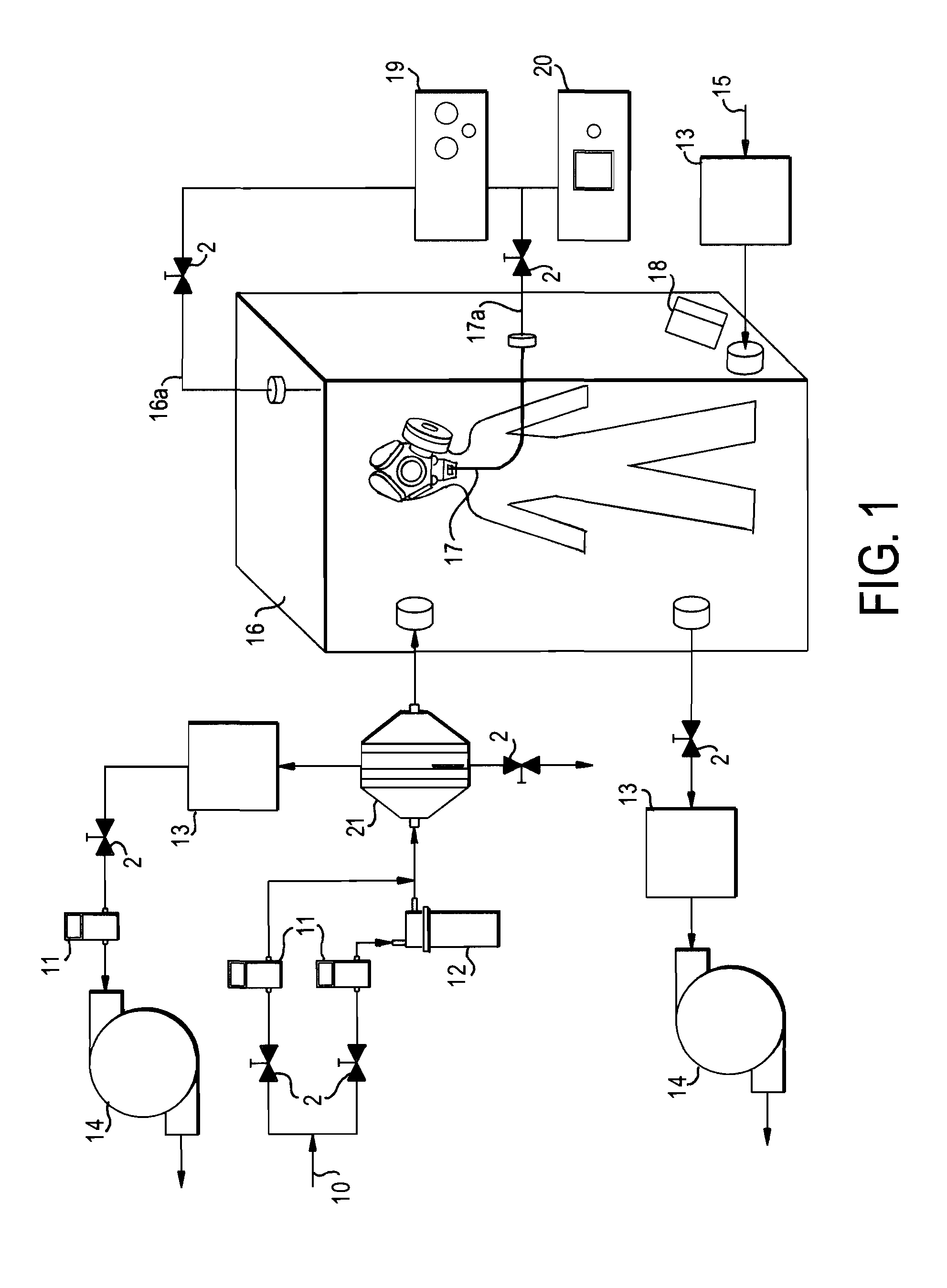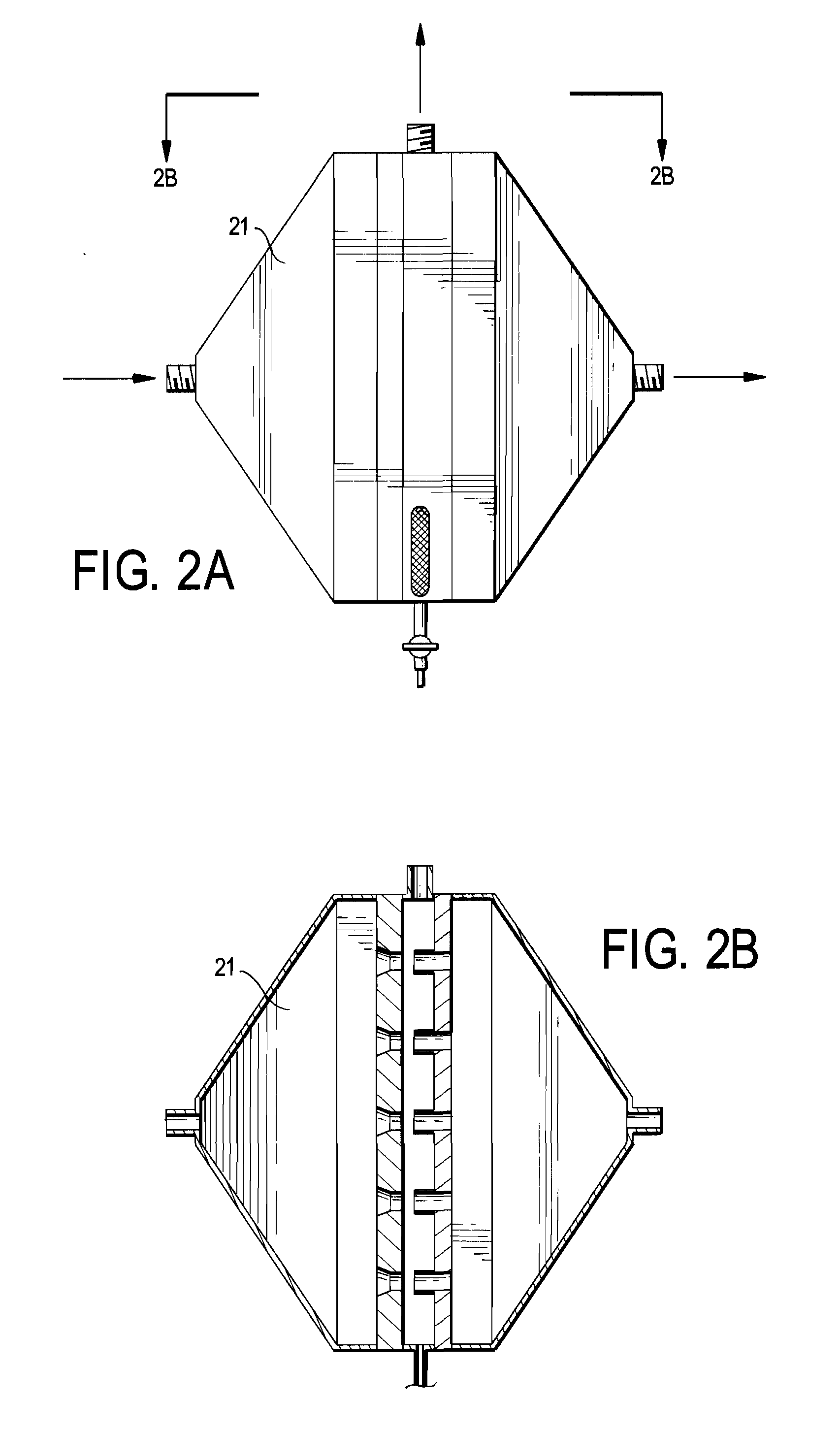Quantitative fit test system and method for assessing respirator biological fit factors
a biological fit factor and fit test technology, applied in the field of quantitative fit tests, can solve the problems of more time to perform, material circumvention, unambiguous results, etc., and achieve the effect of increasing the accuracy of results, more accurately and inexpensively
- Summary
- Abstract
- Description
- Claims
- Application Information
AI Technical Summary
Benefits of technology
Problems solved by technology
Method used
Image
Examples
Embodiment Construction
[0026]While a detailed description of the invention follows in conjunction with the above-identified drawings, it is to be understood that the examples are for illustrative purposes and, for example, when a drawing (or photo) shows more than a multiple quantity of any element, the claimed invention does not require the multiple quantity of any such element unless it is specifically stated that a plurality of an element is required. In addition, the description includes dimensions for illustrative purposes as well as a preferred embodiment, but it is understood that the appended claims are in no way limited by the specified size of any of the elements discussed in the written description.
[0027]Referring first to FIG. 1, the complete bio-QNFT system schematic is displayed. The entire bio-QNFT system typically comprises a compressed air source 10, mass flow meters 11, an aerosol nebulizer 12, HEPA filters 13, exhaust blowers 14, ambient room air 15, an exposure chamber 16, a respirator...
PUM
 Login to View More
Login to View More Abstract
Description
Claims
Application Information
 Login to View More
Login to View More - R&D
- Intellectual Property
- Life Sciences
- Materials
- Tech Scout
- Unparalleled Data Quality
- Higher Quality Content
- 60% Fewer Hallucinations
Browse by: Latest US Patents, China's latest patents, Technical Efficacy Thesaurus, Application Domain, Technology Topic, Popular Technical Reports.
© 2025 PatSnap. All rights reserved.Legal|Privacy policy|Modern Slavery Act Transparency Statement|Sitemap|About US| Contact US: help@patsnap.com



